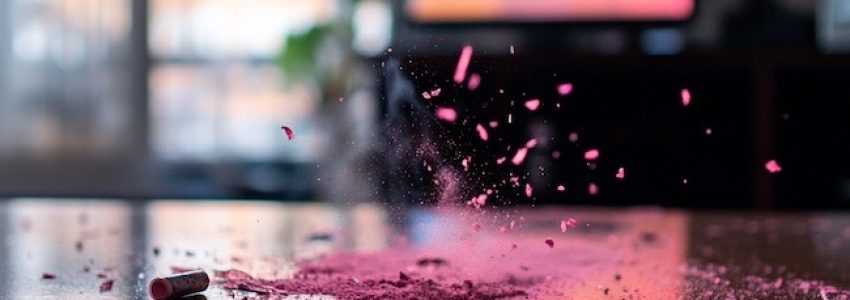Liam Payne had pink cocaine, cocaine, benzodiazepine, and crack in his system at the time of his death, according to ABC News.
The shocking death of former One Direction star Liam Payne in Buenos Aires has underscored the severe risks associated with synthetic drugs and polydrug use. On October 16, Payne fell from the third-floor balcony of his hotel, with reports suggesting that multiple substances in his system may have contributed to his altered behavior and tragic fall.
Liam Payne’s Cause of Death
Shortly before his death, a hotel employee from CasaSur Palermo called 911, urgently requesting assistance for a guest “overloaded with drugs and alcohol.” The receptionist recounted that Payne was acting erratically, reportedly “breaking the whole room” when he was conscious. Staff expressed particular concern over his proximity to the balcony, fearing he might harm himself. This urgent call paints a distressing picture of Payne’s disoriented state, leading up to his untimely death.
Liam Payne’s Autopsy and Toxicology Findings
Following Payne’s death, a preliminary autopsy report revealed “multiple traumas” and “internal and external bleeding” as the immediate cause of death, resulting from his fall. Toxicology results later confirmed a combination of substances in his system, including pink cocaine, cocaine, benzodiazepines, and crack cocaine. A homemade aluminum pipe was also found in his hotel room, suggesting recent drug use. This dangerous mixture of substances likely contributed to Payne’s impaired mental state and high-risk behavior.
What is Pink Cocaine? The Party Drug Found in Liam Payne’s Toxicology Report
Pink cocaine has surged in popularity within nightlife circles across Latin America, North America, and Europe. Despite its name, pink cocaine is not actually cocaine but a synthetic mix of MDMA, ketamine, and caffeine. This cocktail may also contain other substances like benzodiazepines, methamphetamine, and bath salts (cathinones), varying significantly from batch to batch.
Known by street names such as Tusi, Cocaina Rosada, and Tucibi, pink cocaine was originally associated with the psychedelic 2-CB but rarely contains this compound today. Each batch’s unpredictable composition contributes to its volatile effects, with users reporting experiences ranging from euphoria and sensory enhancement to intense disorientation and mood swings. According to DEA, “Pink cocaine is an example of synthetic drugs being marketed in a sophisticated way to consumers, most of whom don’t fully understand what chemicals they’re actually taking.”
Why Pink Cocaine is So Dangerous?
Pink cocaine’s popularity belies its severe risks. The drug’s combination of stimulants and depressants can lead to hallucinations, cardiovascular stress, and seizures, with users often unaware of the specific effects they may encounter. Because each dose of pink cocaine can contain a different blend of substances, effects can vary significantly, making each use unpredictable and potentially deadly. Long-term users of pink cocaine report risks of heart attacks, high blood pressure, behavioral changes, addiction, and anxiety.
Polydrug Use and Its Role in Liam Payne’s Cause of Death
The mixture of pink cocaine, cocaine, benzodiazepines, and crack found in Payne’s system likely contributed to his impaired judgment and disorientation. Each drug affects the body differently, with stimulants like cocaine increasing heart rate and causing agitation, while sedatives like benzodiazepines and alcohol slow down the nervous system. Ketamine, often found in pink cocaine, adds hallucinogenic properties, leading to dissociation and altered perception. This combination can mask each drug’s warning signs, leading to dangerous physical and psychological effects.
Drug-induced psychosis, characterized by hallucinations, paranoia, and severe mood swings, may explain Payne’s aggressive behavior before his death. The combined effects of stimulants and depressants produce a “push-pull” effect, exacerbating disorientation and confusion, which may have contributed to Payne’s actions near the balcony.
How to Respond to Drug-Induced Aggression and Psychosis
If you encounter someone exhibiting signs of drug-induced aggression or psychosis, it is essential to act carefully:
- Stay Calm: Maintain composure and avoid escalating the situation. A calm, clear voice can help ease tension.
- Avoid Confrontation: Refrain from physical interventions, as the individual may not be fully aware of their actions and could react unpredictably.
- Call Emergency Services: Contact emergency services immediately and provide detailed information about the person’s behavior and any suspected substances.
- Ensure Safety: Keep a safe distance and, if possible, remove others from the immediate area to prevent harm.
- Follow Instructions from Emergency Responders: When emergency personnel arrive, follow their guidance to ensure the individual receives appropriate care.







